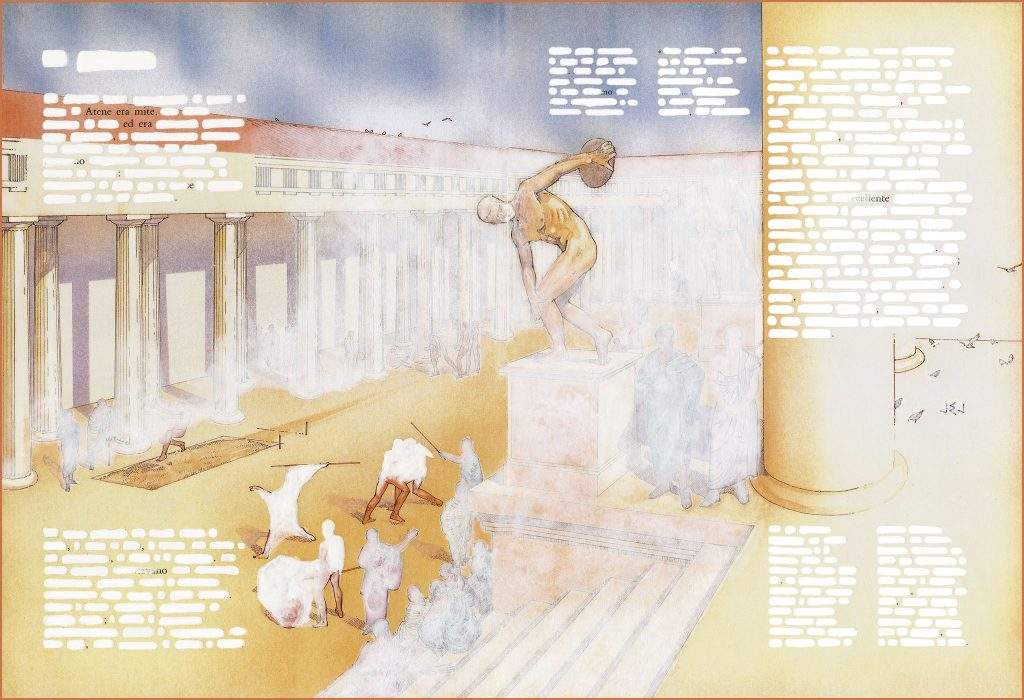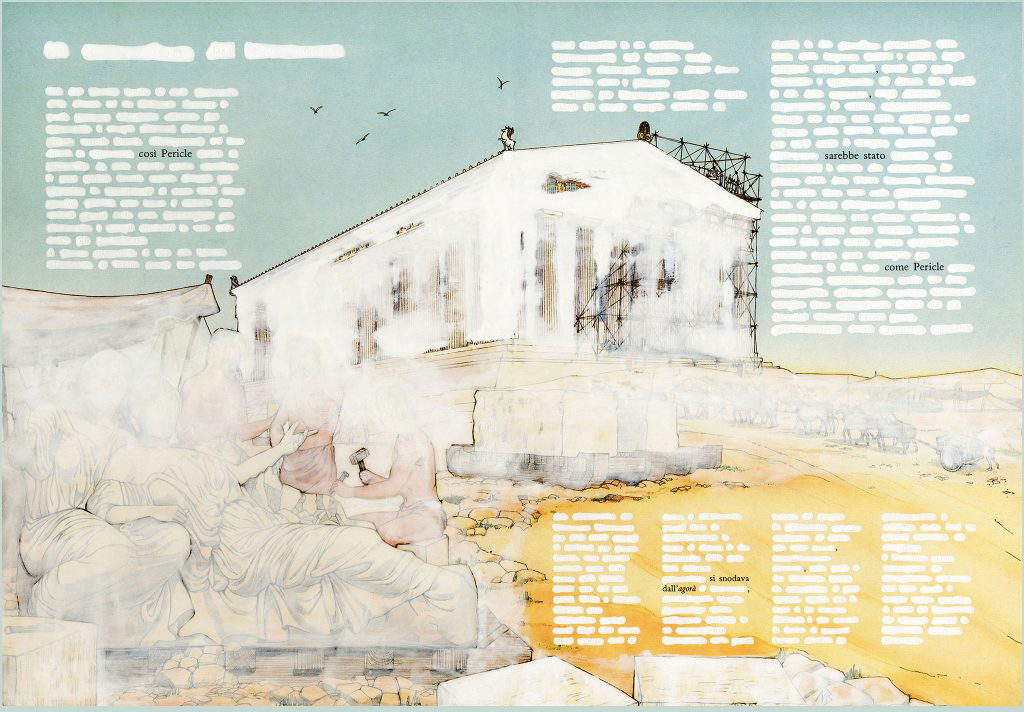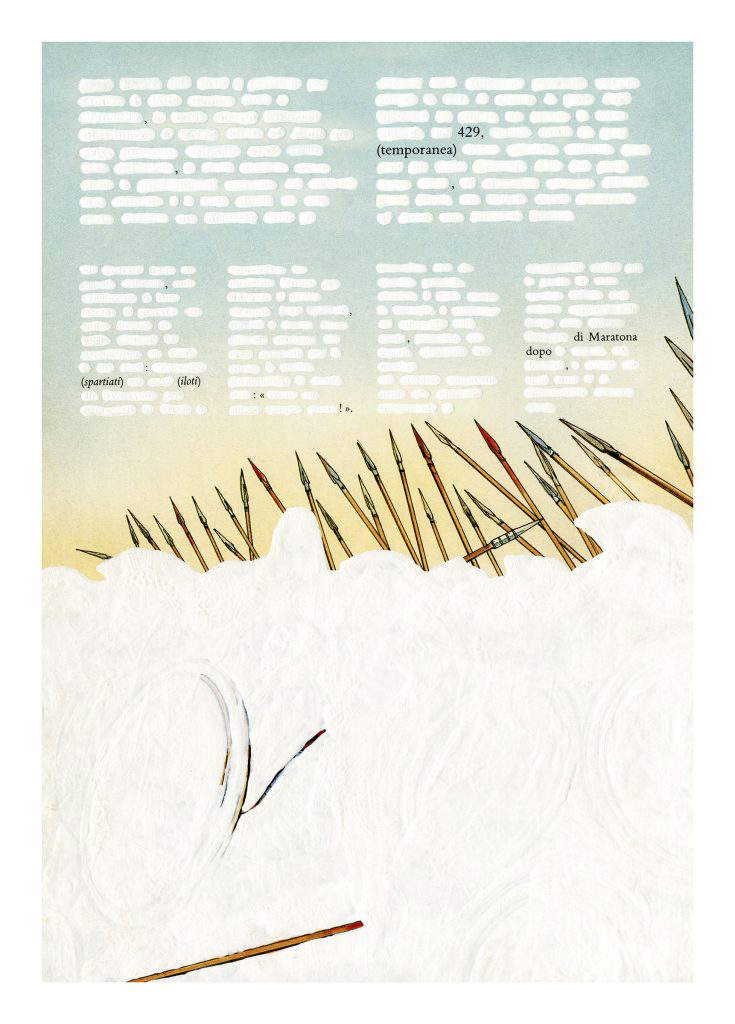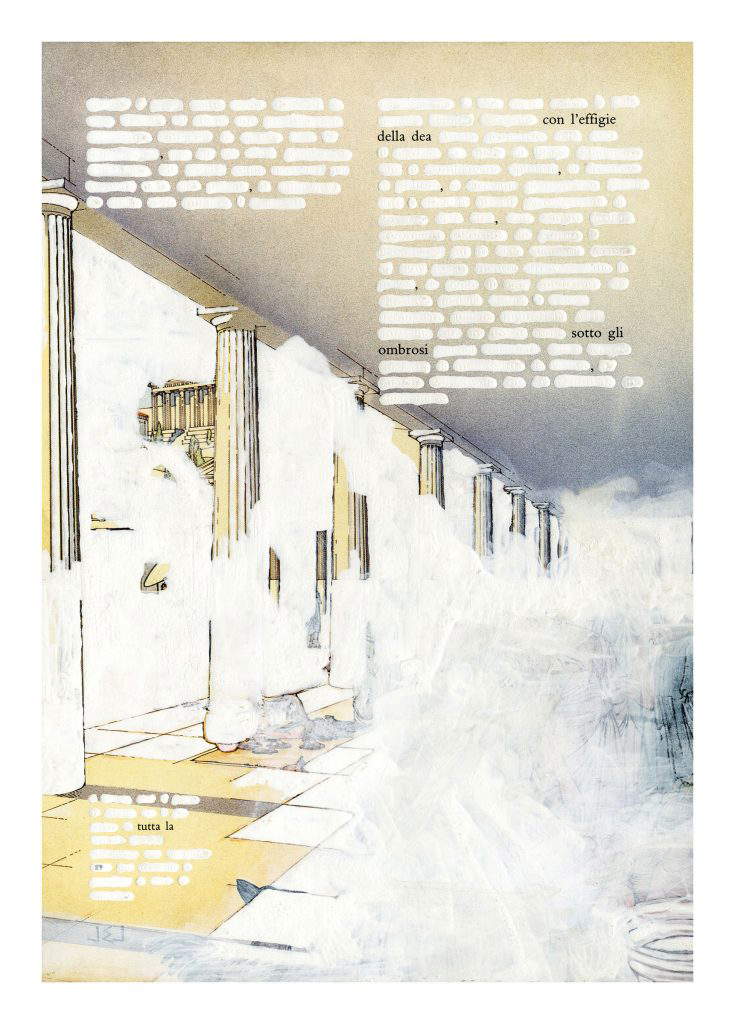Emilio Isgrò clears Brixia: coming soon, the great Sicilian artist's new project
Isgrò cancels Brixia: this is the title of the new project by Emilio Isgrò (Barcellona Pozzo di Gotto, 1937), one of the great protagonists of contemporary art, scheduled to take place in Brescia from June 23, 2022 to January 8, 2023. After the realization of theIncancellable Victory, the monumental installation presented in October 2020 in the Brescia subway, FS station, to celebrate the return of the Winged Victory, Emilio Isgrò reinforces the bond with the city through a new, large and original project that will involve the most important sites of the Brescia Roman Archaeological Park (the largest in northern Italy) and the Santa Giulia Museum: from the Capitolium to the Roman Theater, from the Renaissance Cloister to the Viridarium gardens.
The exhibition project, curated by Marco Bazzini, is produced by Fondazione Brescia Musei and the Municipality of Brescia and places archaeology and contemporary art, history and the present, classical culture and its persistence in our time in dialogue, and consists of monumental installations (physical and digital), the staging of an autograph drama by the Sicilian master in Brescia’s Roman Theater, and an exhibition of 14 original works in the spaces of the Santa Giulia Museum. The artworks, all of environmental dimensions, will be specially designed and created by the artist for this occasion, in close relationship with the spaces that will host them. Together with the exhibition and the theatrical performance, they will demonstrate how much in Isgrò’s production the roots of the great Mediterranean culture are alive and deep, which, with ancient Rome, was also a protagonist in Brescian territory. “Erasing Brixia,” then, is for Isgrò a way to revive it in new and unexpected forms. Which is possible because, in almost sixty years of activity, the Sicilian artist has been able to transform erasure from a simple act of destruction into a complex experience of knowledge.

The exhibition
The exhibition itinerary will ideally cover the monumental space affected by the Unesco Corridor, a project that will be completed during the exhibition’s opening period and that envisages the creation of a single majestic, free visiting itinerary that winds its way inside from the spaces of the Archaeological Park to the Museum of Santa Giulia. The exhibition will start from the central hall of the Capitolium, an epigraphic museum that will host the work The Bees of Virgil. A multitude of bees in flight will erase the inscriptions on the Roman epigraphs placed on the wall: a spectacular installation, created with the most futuristic digital techniques, where the erasure will manifest itself in the vividness of moving images.
Bees, a symbol of sociality and industriousness, as well as covering the epigraphs, will also compose new evocative words, so as to evoke a different temporality between the ancient words and those proper to contemporary times. The viewer immersed in this environment will be surprised, like Aeneas in front of the sudden appearance of the souls that, like a swarm of bees, roamed the valley of the mythological river Lete, in the episode recounted by Virgil in Book VI of theAeneid. The Santa Giulia Museum complex will host three more episodes of the exhibition project. In the Renaissance Cloister will be encountered, arranged on the lawn, The Harmonium of Crazy Larks, an enigmatic and monumental musical instrument, on the perimeter of which runs a sequence of piano keys. In the silence of the place will resound the Casta diva aria from Vincenzo Bellini’s Norma, one of the most powerful operas in the Italian opera tradition, set in the Roman Gauls. The version of the piece that enchanted Richard Wagner is the one transcribed by Fryderyk Chopin for piano, as a tribute to Brescian pianist Arturo Benedetti Michelangeli, played by the chirping of a lark accompanied by a chorus of birds. This work, presented for the very first time in Brescia, will be created by the Fondazione Brescia Musei in co-production with Arte Sella, the important contemporary art park in nature in Val di Sella, Valsugana, (Trento) within whose exhibition routes, at the end of the exhibition, it will be permanently placed in the open-air space identified by the artist himself.
The exhibition rooms of the Santa Giulia Museum will also host an unprecedented cycle of paintings entitled Rome as Athens, thirteen large canvases where the illustrated pages of a book on the daily life of an ancient Greek polis have been erased blank. In these works, Isgrò brings erasure back to a full pictorial practice, and no longer just a conceptual one, recovering an operative mode he has been experimenting with since the early 1980s. The route will end in the gardens of the Viridarium, a public park within the Santa Giulia area and close to the Domus dell’Ortaglia, where a large globe with a diameter of 4 meters will appear as if dropped on the lawn. All the toponyms of the globe will be erased by Isgrò except that of Brixia (Brescia). This large public work, which will remain permanently with the city enriching the city’s civic collections, will be made on stainless steel using state-of-the-art digital printing technology.

The statements
"The Isgrò project cancels Brixia," says Francesca Bazoli, president of Fondazione Brescia Musei, “ferries towards the goal of 2023, the year in which Brescia will be Capital of Culture, and crowns the path that Fondazione Brescia Musei embarked on, now two years ago, around the return to the city of the Winged Victory, from which a vast and varied cultural program has sprung, and invests the great new ’construction site’ of the Roman Theater, baptized last April 4 by a significant conference on the future of Brescia’s Roman theater and which will see the Foundation engaged in the coming years. Not only that: the involvement by Fondazione Brescia Musei of a great master of the caliber of Emilio Isgrò, after that of Francesco Vezzoli, the protagonist of the recently concluded exhibition Palcoscenici Archeologici, confirms the Foundation’s willingness to read the richness of Brescia’s artistic heritage through all the languages of art, up to contemporary art.”
"Isgrò cancels Brixia is for Fondazione Brescia Musei an extremely ambitious and complex project, which is developed on three levels, including different languages, from the material and digital installation dimension, to the traditional exhibition dimension that takes place in the spaces of the Santa Giulia Museum, to the performance part with the theatrical performance directed by Giorgio Sangati," says Stefano Karadjov, Director of Fondazione Brescia Musei. “A project all the more important because it is not ephemeral, since it will allow the city to include new works of contemporary art in its cultural heritage. An important path that will also allow, thanks to the collaboration with Arte Sella, the project and the city of Brescia to live and speak beyond the spatial-temporal boundaries of the exhibition.”

Isgrò’s theater
The great themes of the ancient and the contemporary are also an opportunity to reintroduce the theater of this multifaceted artist who, in the early 1980s, marked an important passage in contemporary dramaturgy with the Orestea trilogy staged on the earthquake ruins of old Gibellina. On Thursday, June 23, 2022, the Teatro Romano, another fascinating site on the archaeological route of ancient Brescia, will host the premiere of Dido Adonais Domine, one of the plays written by Isgrò, produced by the Centro Teatrale Bresciano, starring actress Sandra Toffolatti and directed by Giorgio Sangati. The text, written in 1983, was staged only once in August 1986 in Barcellona Pozzo di Gotto (ME) in the Mandanici Theater. The show will be offered in 6 performances: in addition to June 23, it will be possible to attend the performance on Friday, June 24 and Sunday, June 27, as well as July 1, 2 and 3.
The catalog of the exhibition Isgrò cancels Brixia, published by Skira, weaves together a series of contributions from leading archaeologists, art historians and scholars of Isgrò’s work. The volume will explore in its various nuances the relationship that the artist has always had with ancient and Mediterranean culture, reviving them with originality and new energy in his work.

Emilio Isgrò
Considered among the innovators of Italian artistic language after World War II, Emilio Isgrò is the undisputed father of erasure, an act that he began experimenting with in the early 1960s and that still retains the same liveliness and creative audacity today. This original research into language has made him an almost unique figure on the international contemporary art scene, making him one of its undisputed protagonists. It is, in fact, 1964 when the author began to create his first works by intervening on texts, particularly the pages of books, manually covering a large part of them under rigorous pictorial grids. Words and images are erased individually with a dense mark, and of the writing only small fragments of sentences or a single word remain legible. Over time this gesture is applied to maps, telexes, cinema, musical scores, anticipates the most typical expressions of conceptual art, is declined in installations and, with the transition from black to white in the 1980s, arrives at pictorial results that have been renewed in recent years when with erasure he has constructed images almost like pictograms. Erasing is a contradictory gesture between destruction and reconstruction. Words, and later images, are not outraged by erasure but through it restore new life to a signifier that carries multiple meanings: the primary essence of every work of art. Erasure is the unmistakable language of Emilio Isgrò’s artistic research, which today appears as an alternative philosophy to the contemporary worldview: it explains more than it says.
After his literary debut with the verse collection Fiere del Sud (Schwarz, 1956), he devoted himself to visual poetry, in the dual role of theorizer and artist. In 1966 his first solo show was held at Galleria 1 + 1 in Padua, followed by numerous exhibitions at Galleria Apollinaire, Galleria Schwarz and Galleria Blu in Milan, La Bertesca in Genoa, and Galleria Lia Rumma in Naples. In 1977 he won first prize at the São Paulo Biennial. In 1985 he made the multimedia installation La veglia di Bach in Milan, commissioned by Teatro alla Scala for the European Year of Music, while in 2010 with the exhibition Var Ve Yok he was at Taksim Sanat Galerisi on the occasion of Istanbul European Capital of Culture.
He participated in the Venice Biennale in 1972, 1978, 1986 and 1993, the latter with a solo room. Also of unmistakable note is his activity as a writer and man of the theater, consolidated with L’Orestea di Gibellina (1983/84/85) and several novels and books of poetry, including L’avventurosa vita di Emilio Isgrò (Il Formichiere, 1975), Marta de Rogatiis Johnson (Feltrinelli, 1977), Polyphemus (Mondadori, 1989), L’asta delle ceneri (Camunia, 1994), Oratorio dei ladri (Mondadori, 1996) and, finally, Brindisi all’amico infame (Aragno, 2003). In recent years his solo exhibitions have been presented at the Luigi Pecci Center for Contemporary Art in Prato (2008), the National Gallery of Modern Art in Rome (2013) and, in 2016, a major anthological exhibition curated by Marco Bazzini involved Palazzo Reale, Gallerie d’Italia and Casa del Manzoni in Milan. In 2019 a massive anthological exhibition curated by Germano Celant was presented at the Giorgio Cini Foundation in Venice. His works can be found in major national and international private and public collections.
 |
| Emilio Isgrò clears Brixia: coming soon, the great Sicilian artist's new project |
Warning: the translation into English of the original Italian article was created using automatic tools. We undertake to review all articles, but we do not guarantee the total absence of inaccuracies in the translation due to the program. You can find the original by clicking on the ITA button. If you find any mistake,please contact us.




























